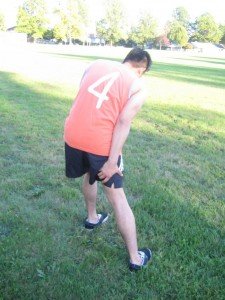Sartorius pain is likely to occur if an individual has pulled or strained the Sartorius muscle. This generally triggers discomfort in the inner thigh or infection in the region of the outer hip. It is likely for this muscle to tighten since it is utilized in various leg movements.
The Sartorius muscle is large and positioned in the upper leg. It originates at the exterior hip, moves over the thigh bone and radiates throughout the length of the inner thigh and concludes beneath the interior of the knee. The muscle is used when bending the knee to raise the foot up to the back as well as assist in flexing and rotating the hip. If damaged or pulled, groin or Sartorius pain arises.

What are the causes?
The Sartorius muscle can end up strained or pulled when engaging in high-impact activities such as running, sprinting and jumping. Activities that requires strong push off places significant strain on the muscle.
Sustaining a direct strike on the area during sports can also result to pain and injury. If the individual plays certain sports such as rugby, hockey, basketball of football, there is a high risk for damaging the muscle.
Indications
Sartorius pain can be felt throughout the interior of the thigh or groin region. If the legs are positioned together, it triggers discomfort.
In some instances, raising the knee upwards can trigger the symptoms. There is also tenderness and weakness in the muscles of the inner thigh. The doctor might perform a physical exam to check if the discomfort is due to the muscle injury.
Management of Sartorius pain
When managing Sartorius pain, it involves eliminating any activities that worsens the pain. Application of an ice pack on the site along with anti-inflammatory medications can also help.
Once the individual returns to physical activity, the doctor might suggest a bandage wrap on the thigh. A short period of physical therapy is also essential where the individual is guided on exercises to alleviate the symptoms as well as prevent re-injury of the area.
The individual should avoid any painful activities and gently stretch until the full range of motion and normal strength is restored in the affected leg and when the individual can walk without limping or Sartorius pain.
